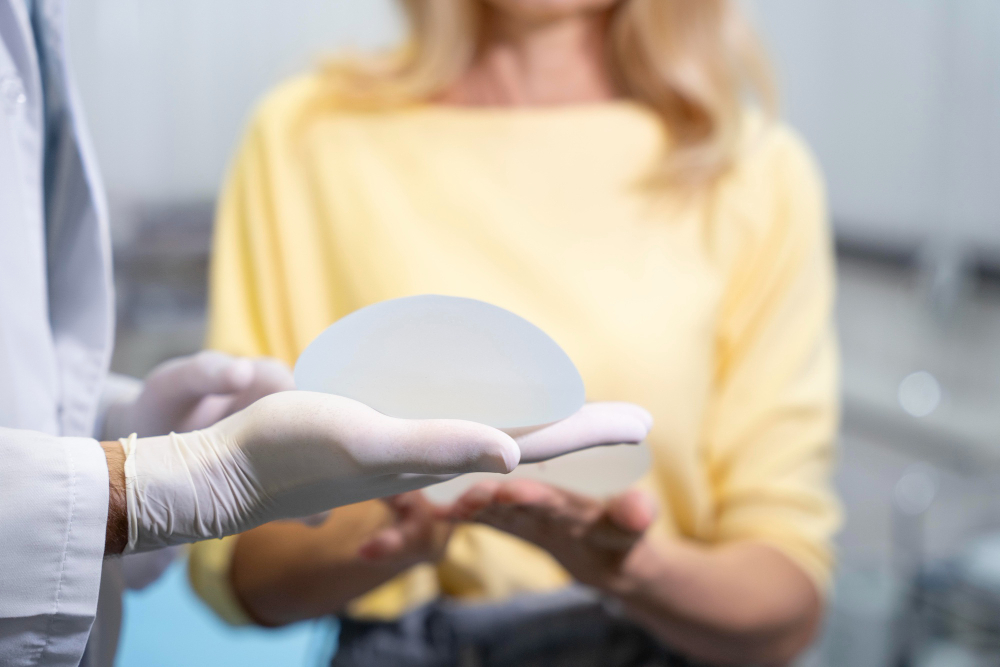Skin & Esthetics
Breast Implants
By H.S. (staff writer) , published on February 13, 2022

Medicine Telehealth Health
Breast implants are medical devices that are put under the breast tissue or chest muscle to enhance breast size (augmentation) or replace breast tissue lost due to cancer or trauma, or that has failed to grow normally due to a serious breast defect (reconstruction).
An outer silicone shell covers both saline and silicone breast implants. However, the filler substance and consistency of the implants differ from one another.
Breast augmentation using saline implants
Sterile salt water is used to fill saline implants. Empty, they're introduced into the machine and then filled with liquid.
For breast augmentation, saline breast implants may be used on women at least 18 years old; for breast reconstruction, they can be used on women of any age.
Breast implants made of silicone
Implants containing silicone gel, thick and sticky like human fat, are pre-filled. The majority of women prefer breast implants made of silicone because they mimic the appearance and feel of real tissue.
Women over the age of 22 may have silicone breast implants placed in their breasts, and women of any age can have silicone implants placed in their breasts for breast reconstruction.
Do breast implants come with any risks?
Breast implants made of saline or silicone has relative risks, such as:
The scar tissue that alters the breast implant's form (capsular contracture)
· Breast ache
· Infection
· Temporary alteration of the nipple and breast feeling rupture or leaking of the implant
Implants may need to be removed or replaced to remedy these issues.
Breast implant-associated anaplastic large cell lymphoma (BALCL) is a malignancy linked with specific breast implants (BIA-ALCL).
The most dangerous implants are those made of textured silicone or polyurethane. Although breast tissue is involved, this malignancy is not breast cancer. It may need surgery, radiation therapy, and chemotherapy treatment.
If an implant ruptures, what happens?
· If a silicone or saline implant ruptures, the treatment may be different.
· An implant of saline that has been ruptured
· Saline breast implants may rupture and cause the implant to deflate, resulting in an altered size and shape in the breast that has been impacted.
As long as the silicone shell is removed, there is no risk of the saline solution leak. New implants may be placed at the same time if desired.
As long as the fibrous tissue (capsule) that grows around the implant can contain any loose silicon, you may never know whether a silicone breast implant has ruptured. Silent rupture is the term used to describe this.
Breast cancer, reproductive issues, and rheumatoid arthritis aren't linked to silicone gel leaks. It's still possible that a ruptured silicone breast implant might produce discomfort or changes in a woman's chest.
Surgery to remove the implant may be recommended if this occurs. A new implant may often be put in simultaneously as a replacement.
The safety of breast implants is something that is regularly tracked.
Breast augmentation and breast reconstruction with saline or silicone implants are both considered safe procedures to do nowadays. Both kinds of implants are being studied for their safety and efficacy.
References
1) Medicine, I. of and Implants, C. on the S. of S.B. (2000) Safety of Silicone Breast Implants. National Academies Press.
2) Pittet, B., Montandon, D. and Pittet, D. (2005) 'Infection in breast implants', The Lancet Infectious Diseases, 5(2), pp. 94–106. doi:10.1016/S1473-3099(05)01281-8.
3) Types of Breast Implants (no date) American Society of Plastic Surgeons. Available at: https://www.plasticsurgery.org/cosmetic-procedures/breast-augmentation/implants (Accessed: Jan 5 2022).
Find articles related to: Medicine Telehealth Health
More articles about Skin & Esthetics
Back to the Health Tips Index




